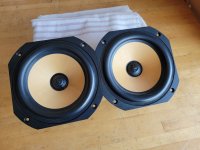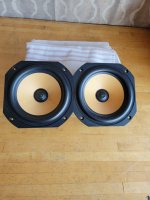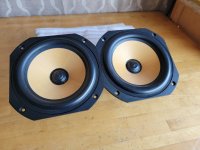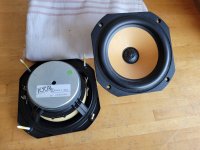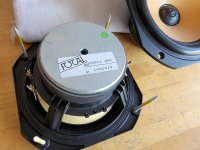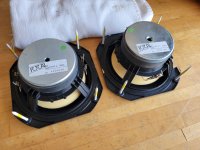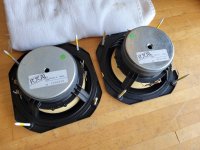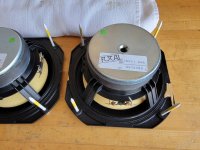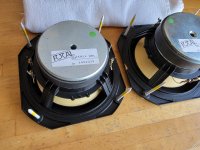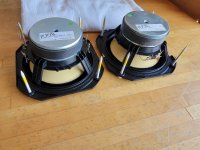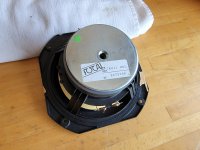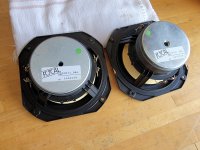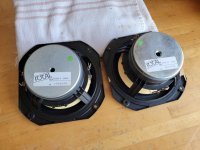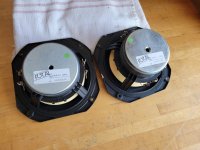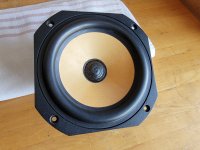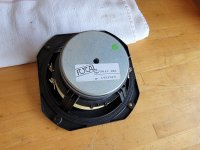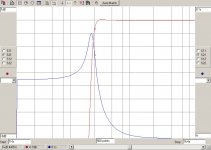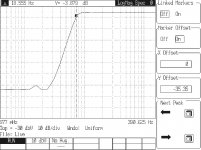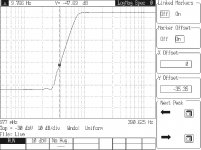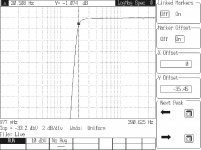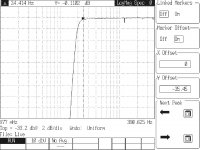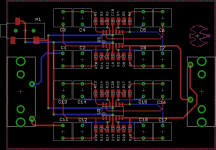Hello guys!
A fresh new PeeCeeBee is here, the V4! In this thread group-buys for the printed circuit boards are arranged.
It's a Lateral MOSFET based Class-AB amplifier with symmetrical "current feedback", evolved from from the diverse
PeeCeeBee series, and now with excellent sonics coupled with excellent looks.
🙂
The new design is electrically and sonically a step forward from the "stubbornly" simple but very good sounding designs released in the original PeeCeeBee thread. I say a step forward partly because it incorporates some extra well-known techniques to handle some of the problem areas in the old designs and allows a quicker and safer mode of set-up and operation, but mostly because while doing so it didn't become a fatigue-inducing clinical sounding amplifier. The layout is designed by myself and the amplifier is very stable, both thermally and electrically. The amplifier has similar sonic signature to the previous peeceebees in the mid and high frequency band, but the low-frequency performance has been substantially improved so that it can be used as a full-range amplifier with effortless bass as well as beautiful midrange and highs.
It uses a simple but effective diode-clamp based soft-clipping so that occasional overloads don't bother listening enjoyment. The two jumpers, when open, remove the chance of overloading Q9/Q10 while setting-up. The constant current sources keep the input/VAS bias much less affected by power supply variation during loud playback and/or mains fluctuation.
The following two screenshots show the design:
This is how the PCB looks in real world:
A fully assembled channel:
Some specs (measured with generic components/passives and basic unregulated linear PSU):
Maximum Power - 50WRMS/90WRMS into 8R/4R load with +/-35V PSU
Maximum allowed PSU voltage for 4R operation - +/-35V (with default clamp diodes and BD BJTs for Q9/Q10) and +/-42V (with higher voltage rated clamp diodes and MJE BJTs for Q9/Q10)
Frequency response(simulated) - ~2Hz to ~800KHz (-3dB)
AC gain - 23 (27dB)
DC gain - Unity
Input level for 50WRMS into 8R - 1VRMS
THD 100Hz 10W - 0.0005%, 1KHz 10W - 0.001%, 10KHz 10W - 0.002%
Slew Rate - 100V/uS
SNR - >100dB
Offset variation - +/-10mV
Screenshot of 1KHz THD spectrum (10W into 8R resistive load, 0.002% source THD):
Screenshot of 1KHz + 5.5KHz IMD spectrum (1.7W into 8R load):
__________________________________________
Group Buy Information:
The PCBs are 92mmx64mm 2-Layer and I plan to batch-print 50, 75 or 100 PCBs depending on interest and how many people join in the GB list. The boards are made with 2.4mm FR4, 60micron copper, HASL finish, white silkscreen and black solder mask, as shown in the above pictures.
> The PCBs cost US$10 a piece.
> After the GB list is full, each user will be contacted and sent the first invoice for PCB cost, and the rest (including shipping charge, packing and processing charge and PayPal charge) is to be paid before shipping the boards, for which the second invoice will be sent.
> International payments are accepted through PayPal and payments from within India are accepted through bank account transfer/deposit, NEFT etc.
> Delay between placing the batch order to PCB plant and delivery of the boards to me will be 18-20 days.
Shipping Information:
Two forms of shipping available. International Air Parcel and Registered Post. Former takes about 15-20 days to deliver and the latter takes about 30-40 days. Both support tracking.
_____________________________________________________
GB1 (April 26 2017)
--------------------------------
Update: Pending members and anyone wishing to join, Please notice:
PM/invoices will be sent up-to 5th May.
Last day of confirming order is 7th May.
PCBs will be ordered on 8th May.
Update(May 9 2017): Total 120 boards ordered. There are still 10 spare PCBs so join in if interested in a couple.
Update(May 11 2017): GB list full. No new entries are being taken until June 1 2017.
GB1 Ended.
--------------------------------
GB2 (June 15 2017)
-------------------------------
Second group buy has started.
GB2 Ended.
-------------------------------
GB3 (Sept 12 2017)
-------------------------------
Third group buy is now open for entry. Join in if interested!
GB3 Ended
-------------------------------
GB4 (Dec 23 2017)
-------------------------------
Fourth group buy has started.
GB4 Ended.
-------------------------------
GB5 (Aug 17 2018)
-------------------------------
Fifth Group Buy arranged. Boards available.
_____________________________________________________
Important Links:
Download Latest BOM for PeeCeeBee V4 >Here<
Download Setup Guide And Component Indication >Here< (Follow this to populate and start the PCBs)
Heat Sink Drill Template >Here<
Thanks.
shaan
🙂







